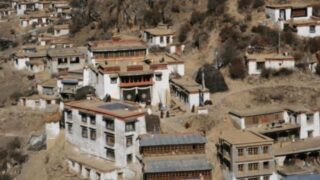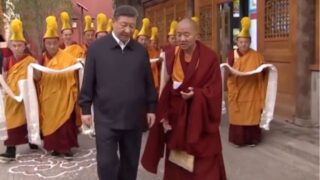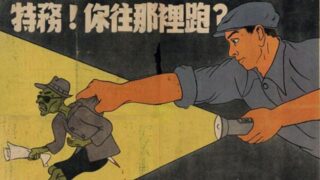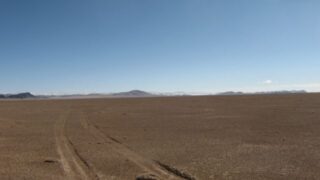A “Kingdom of Zhangzhung” perhaps existed in ancient times, but the CCP’s false claim that it was “Chinese” is used in anti-Tibetan and anti-Indian propaganda.
by Lopsang Gurung


Did you ever hear of Zhangzhung? Western readers who would be tempted to jump to Wikipedia for an answer should consider that China employs an army of trolls to constantly rewrite the popular online encyclopedia and further the CCP’s interests. Tibetans who go to school in the so-called Tibet Autonomous Region, on the other hand, are increasingly exposed to the notion of Zhangzhung, and there are well-funded CCP programs to promote “Zhangzhung Studies” through lectures and conferences both in China and internationally.
As told in schools in Tibet and China, the story goes as such. In the Iron Age (but in fact with much earlier origins), a powerful kingdom arose called Zhangzhung that included Western Tibet, most of the present-day Indian union territory of Ladakh, and portions of what are today Nepal and Pakistan. It had an advanced culture and its own religion, Bon. It also had a book defining its culture, the “Zhangzhung (or Shangshung) Tripitaka,” which despite the Buddhist-sounding name predated the arrival of Buddhism in the area. Its earlier versions may date back to some 4,000 years ago. Remember, this is what Tibetan school pupils are told, not the real story.
According to this story, Zhangzhung flourished for more than one thousand years before it was conquered by the Tibetans of Western Tibet and incorporated into their Buddhist kingdom between the 7th and the 8th century CE. And Zhangzhung, while representing a crossroad of civilization, was not an “Indian” but a “Chinese” culture, although its history has been hidden and falsified by Tibetans and Westerners, until Chinese archeologists rescued it.
The CCP is preparing a Chinese translation of the “Zhangzhung Tripitaka,” in which the government-controlled China Buddhist Association is heavily involved. Bai Gengsheng, secretary of the Party-sponsored Chinese Writers Association, told the “People’s Daily” that “Although we [Chinese] have the ‘ownership’ of the ancient Zhangzhung culture, its ‘discourse power’ has long been in the hands of foreigners.”


Important resources are devoted to find archeological evidence confirming this story, and Xi Jinping’s own passion for archeology is well-known. The story of Zhangzhung, however, is taught for its propaganda value. It tells Tibetans that their most remote origins are “Chinese,” it separates Tibet from Indian culture, and it supports China’s border claims against India (in fact, arguing that all Ladakh was originally “Chinese”).
The problem with this story is that it is largely invented. We know precious nothing about the Kingdom of Zhangzhung except that it probably existed before it was incorporated into Tibet. But we do not know exactly where it was located, its extension, and its history.
As for the Bon religion, what is well-documented is its late version that developed in conversation with Buddhism, and later as a branch of it, long after Zhangzhung had ceased to exist. Of Bon’s previous incarnation as a pre-Buddhist shamanistic tradition, again, not much is known, unless legends are taken at face value. We know the so-called “Zhangzhung Tripitaka” through later post-Buddhist versions and that it is a thousand-year-old text is a matter of legends.


Archeology has found rock art, tombs, and remains of stone structures in Central and Western Tibet that documents an Iron Age civilization, but connecting these discoveries to the “Kingdom of Zhangzhung” is much more problematic. If anything, scholars believe that Zhangzhung was a civilization with strong Indian, rather than Chinese, connections and features.
The problem is not Zhangzhung, which is surely a legitimate object of scholarly and archeological study, just as Bon is a fascinating subject for religious scholars. The problem is China’s “political archeology” and manipulation of the past to boost its imperialistic territorial claims and falsify Tibetan identity by representing it as “Chinese.”









